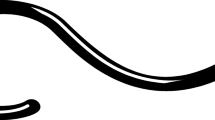Abstract
The safety of 5% ponazuril oral suspension was evaluated in two-week-old Beagle puppies by administration of 250 mg ponazuril/kg for three consecutive days. Exaggerated dosages had no adverse effect on health or pathologic (clinical, gross, micro) indices. In two studies to evaluate the efficacy of ponazuril against naturally acquired C. ohioensis-like infections, Beagle puppies were ranked by oocyst counts, randomly allocated to treatment or control groups, and general health observations and oocyst counts were recorded daily for 14 days post treatment. In study 1, 25 Beagle puppies were allocated to five groups: ponazuril 20 or 30 mg/kg once (day 0) or twice (days 0 and 7) or placebo given twice. One treatment at 30 mg/kg significantly reduced oocyst counts (P < 0.019), and retreatment with either dosage significantly increased efficacy (P < 0.05). In study 2, 30 puppies were allocated randomly to six groups: ponazuril 20, 30, 40 or 50 mg/kg once (day 0), or ponazuril 30 mg/kg or placebo twice (days 0 and 7). Oocyst counts were significantly reduced (P < 0.02) by 30 or 50 mg/kg, and dosages ≥ 40 mg/kg acted more rapidly. No adverse effects of ponazuril were observed in either study, and no significant differences in clinical signs of coccidiosis were observed.
Similar content being viewed by others
References
Becker C, Heine J, Boch J (1981). Experimentelle Cystoisospora canis- und C. ohioensis Infektionen beim Hund. Tierärztliche Umschau Zeitschrift für Gebiete der Veterinärmedizin 36:1–8.
Cox DD, Todd AC (1962). A survey of gastrointestinal parasitism in Wisconsin dairy cattle. JAVMA 141:706–709.
Daugschies A, Mundt HC, Letkova V (2000). Toltrazuril treatment of cystoisosporosis in dogs under experimental and field conditions Parasitol Res 86:S797–S799.
Jacobs DE, Arakawa A, Courtney CH, Gemmell MA, McCall JW, Myers GH, Vanparijs O (1994). World Association for the Advancement of Veterinary Parasitology (WAAVP) guidelines for evaluating the efficacy of anthelmintics in dogs and cats Vet Parasitol 52:179–202.
Levine ND, Ivens V (1981). The coccidia parasites (Protozoa: Apicomplexa) of carnivores Illinois Biological Monographs 51 University of Illinois Press, Urbana, IL, p. 248.
Lindsay DS, Dubey JP, Blagburn BL (1997). Biology of Isospora spp. From humans, nonhuman primates and domestic animals Clinical Microbiol Rev 10:19–34.
Mundt HC, Joachim A, Becka M, Daugchies A (2006). Isopora suis: an experimental model for mammalian intestinal coccidiosis Parasitol Res 98:S167–S175.
Penzhorn BL, De Cramer KG, Booth LM (1992). Coccidial infection in German Shepherd dog pups in a breeding unit J South African Vet Assoc 63:27–29.
Tenter A, Deplazes P (2006). Protozoeninfektionen von Hund und Katze. In: T. Schnieder (ed), Veterinarmedizinische Parasitologie, Parey Medizinverlag, Stuttgart, pp. 409–443.
VICH Guideline 9. Good clinical practice (07/2000). Veterinary International Cooperation on Harmonization, European Agency for the Evaluation of Medicinal Products, London, UK.
Author information
Authors and Affiliations
Corresponding author
Rights and permissions
About this article
Cite this article
Charles, S.D., Chopade, H.M., Ciszewski, D.K. et al. Safety of 5% Ponazuril (Toltrazuril sulfone) Oral Suspension and Efficacy against Naturally Acquired Cystoisospora ohioensislike Infection in Beagle Puppies. Parasitol Res 101 (Suppl 1), 137–144 (2007). https://doi.org/10.1007/s00436-007-0621-9
Published:
Issue Date:
DOI: https://doi.org/10.1007/s00436-007-0621-9



